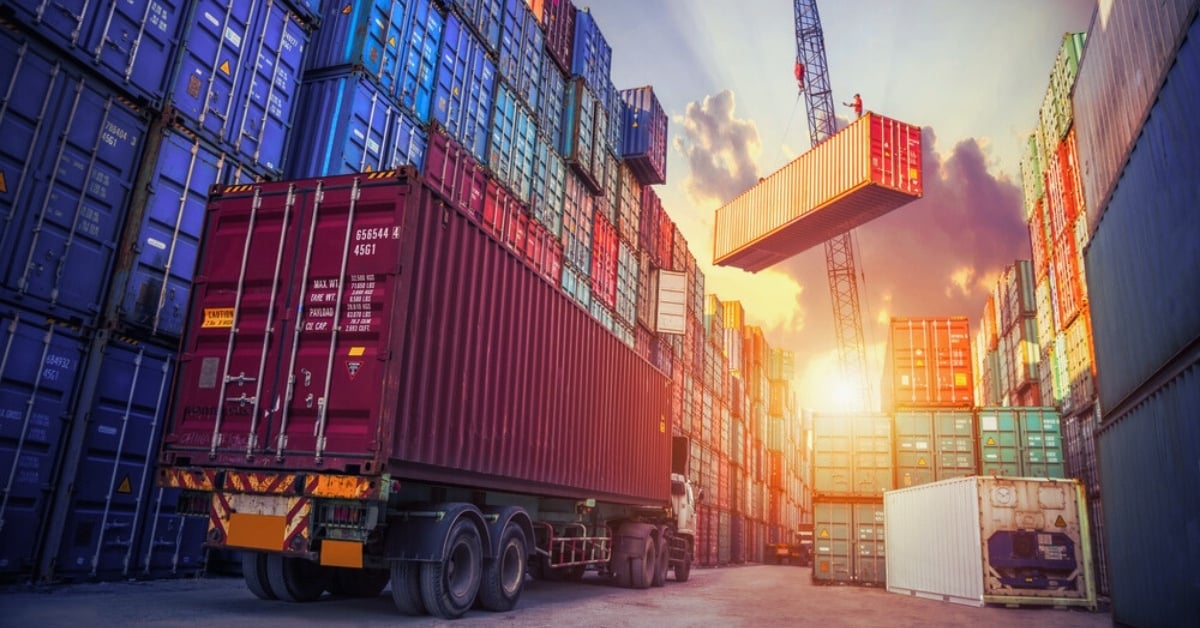Author: Banyan Technology
Future of Freight Tech: Self-Service Innovation as the New Standard
What Shippers and 3PLs Need to Know About the 2025 NMFC Classification Changes
Managing freight classifications is changing, requiring logistics teams to adapt and stay informed to maintain accuracy and efficiency. Starting July 19, 2025, the National Motor Freight Traffic Association (NMFTA) is rolling out major changes to the National Motor Freight Classification (NMFC) system. These updates will directly impact how LTL shipments are classified, rated and billed, making it essential for Shippers and 3PLs to understand what’s changing and how to prepare.
Keith Peterson, Director of Operations at the NMFTA, recently joined Banyan Technology’s Tire Tracks podcast to discuss what the 2025 NMFC classification changes really mean for the freight industry. As the leader responsible for overseeing the NMFC classifications team, Peterson shared both the reasoning behind the updates and how they were developed.
“The whole point of these changes is to make classification easier and simpler to use for everybody, even someone new to the logistics business,” Peterson explained. He noted that the NMFTA has been transitioning toward a density-based model for several years, but the July 2025 update represents a major leap forward. More than 2,000 item numbers are being moved to full density scales, supported by a newly expanded 13-tier system.
Why Accessorial Verification is Critical to Controlling Freight Spend
Managing freight costs is one of the most complex and critical challenges for today’s logistics teams. With inflation and rising customer expectations, Shippers are under pressure to maintain predictable transportation budgets. While most focus on base rates and fuel surcharges, a significant portion of spend often hides in plain sight within accessorial charges.
Accessorials are additional service fees on shipments that require extra handling or fall outside standard Carrier procedures. These include items like liftgate requirements, inside delivery, residential drop-offs and delivery to Limited Access locations. When these fees are not identified upfront, they lead to unexpected charges, strained Carrier relationships and costly billing disputes. When these fees are not identified upfront, they lead to unexpected charges, strained Carrier relationships and costly billing disputes that can delay invoicing, disrupt customer expectations and damage trust when charges are added after the shipment is complete.
Shippers looking to gain more control over freight spend and improve overall shipping performance must prioritize the often-overlooked practice of accessorial verification.
Why Carrier Vetting, Intelligent Onboarding and Compliance are Non-Negotiable
Trust and transparency are critical in high-stakes logistics. A survey conducted by Supply Chain Management Review highlighted that while 89% of supply chain executives believe customers trust their operations, only 68% of customers share that sentiment, indicating a significant trust gap.
Shippers and 3PLs are under pressure to deliver not only speed and savings but also security and service. Behind every successful shipment is a reliable Carrier, but that reliability doesn’t happen by chance. It’s built through smart vetting, seamless onboarding and a strong commitment to compliance.
Discover the Power of On-Demand Freight Insurance
Cargo theft has reached unprecedented levels in recent years, posing a substantial threat to supply chains. In 2024, North America experienced a 27% increase in cargo theft incidents, totaling 3,625 cases. The average value of stolen shipments rose to $202,364 per incident, culminating in an estimated total loss of $454.9 million.
Many companies operate under the misconception that carrier liability will fully cover losses due to theft or damage. However, carrier liability is often limited and may not reflect the full value of the cargo. For example, liability coverage provided by carriers typically ranges between $0.50 and $25 per pound, which can be significantly less than the actual value of high-value shipments. Additionally, carriers may invoke limitations for damages resulting from acts of God, shipper negligence or other exclusions, leaving companies vulnerable to substantial financial losses.
Meanwhile, Shippers and 3PLs are expected to deliver more freight faster and safer than ever before. But with rising theft, damaged cargo and legal exposure, simply booking a shipment isn’t enough. You need to be sure that what you’re moving is also protected. That’s where on-demand freight insurance comes in.
Top 5 Data Points Critical to Enhancing RFPs for Freight Procurement
In today’s competitive logistics landscape, crafting a compelling Request for Proposal (RFP) requires more than just cost comparisons. A data-driven, automated approach is essential for making strategic freight decisions and maximizing efficiency.
An automated approach integrates real-time data analysis, allowing businesses to quickly assess historical shipping costs, carrier performance, freight volume, accessorial charges and transit times. Leveraging automation in RFPs creates a more dynamic, data-driven decision-making process, helping Shippers optimize their supply chains and gain a competitive edge.
Strategies for Reducing Cargo Theft with Automated Risk Management
It’s no secret that cargo theft is a growing problem across North America, with incidents increasing by 27% in 2024 alone, leading to nearly $455 million in reported losses. Organized crime groups are becoming more sophisticated, using identity theft, double-brokering schemes and fictitious pickups to steal high-value shipments. The best way to combat this is for Shippers and 3PLs to implement automated risk management solutions that enhance security, improve visibility and mitigate financial losses.
The Future of Freight Management: Why Shippers and 3PLs Are Racing to Adopt Game-Changing Technology
The freight industry is in the midst of a digital transformation, and Freight Management Systems (FMS) are at the center of this shift. FMS platforms are technology solutions designed to optimize and automate freight logistics, helping businesses manage shipping operations more efficiently. These systems integrate key functions like real-time shipment tracking, carrier selection, rate management, route optimization and freight auditing, enabling companies to streamline their supply chain processes.
According to the 2024 Freight Management System Market report, the global FMS market, valued at $20.58 billion in 2023, is projected to nearly double to $38.73 billion by 2029, growing at a rate of 10.95%. This rapid growth reflects the increasing need for businesses to optimize shipping operations, enhance visibility and reduce costs in an increasingly complex supply chain landscape.
Securing Shipments with Integrated Risk Management Solutions for Freight Management
Modern logistics companies face challenges like theft, fraud and unexpected delays that can derail operations. These risks can create significant disruptions, impacting profitability, customer satisfaction and supply chain efficiency. One way to combat these challenges is by integrating advanced risk management platforms into your Transportation Management System (TMS).
By leveraging real-time monitoring, predictive analytics and enhanced data security, businesses can proactively identify potential threats, streamline operations and maintain the integrity of their shipments. This approach not only minimizes financial and operational losses but also strengthens trust with customers and partners by ensuring reliable and secure delivery.









